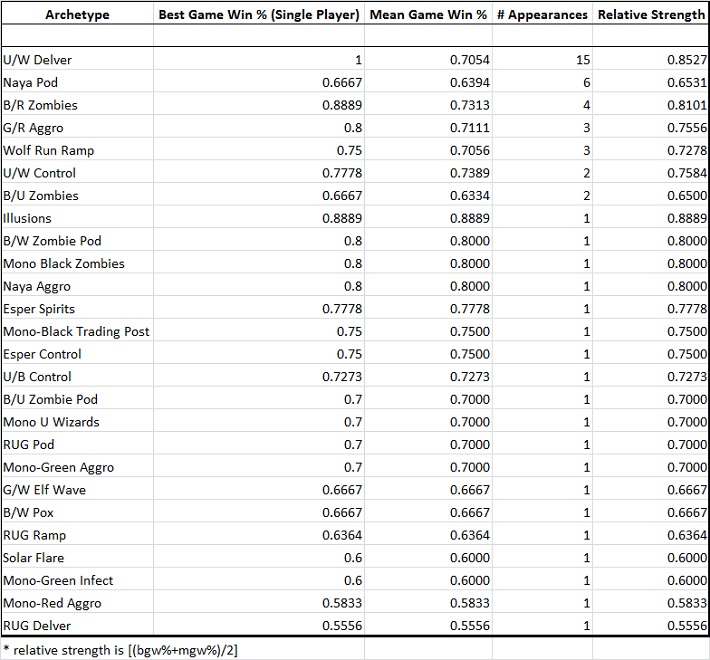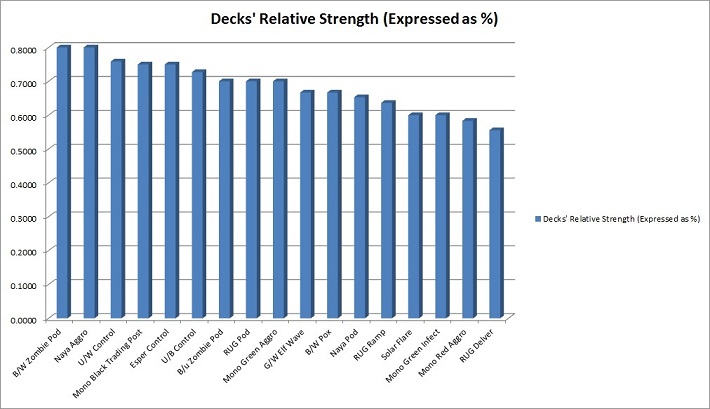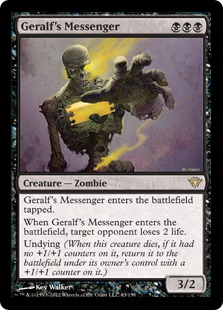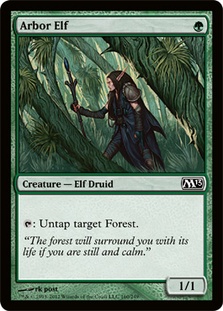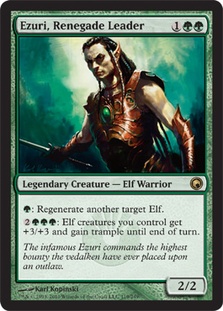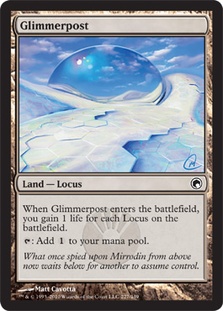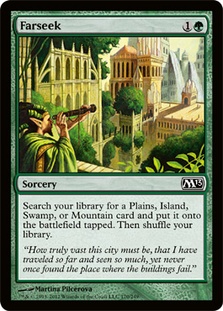Very rare are the tournaments that have a competitive ‘feel’ but still encourage innovative deck choices, congenial behavior, and a ‘shiny new cards’ type of excitement. Friday Night Magic (FNM), for many players a frequent Standard tournament series, is casual, and while this doesn’t speak to the potentially high level of play at these events such as when local ‘ringers’ or even pro players are in attendance, it’s the epitome of a low-stakes environment.
The very next level up is the ‘Game Day’ series held at many local game stores across the United States. These Standard tournaments offer unique prizes, both for performance and for participation, and can provide an interesting mixture of PTQ-level competition (without the golden ticket at the end of the line) and casual appeal.
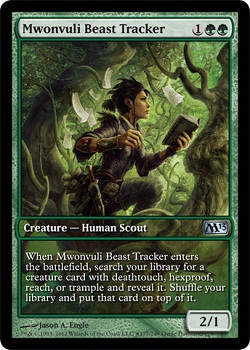
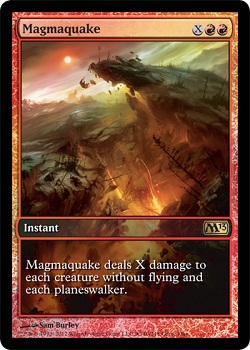
These tournaments also benefit from the ‘States’ or ‘Champs’ effect where a new set recently has been introduced to the metagame, and even with the dual card-grinding machines we have in operation (the StarCityGames.com Open Series and Magic Online Daily Events), innovation is both likely and exciting.
So what can we do if we want to perform well at Game Day while avoiding some of the more ‘overplayed’ archetypes of the past few months? A fantastic place to start is Magic Online Daily Events. The ‘What’s Happening?’ page lists all of the decks that have gone 3-1 or better in these events. We can look at a reasonable, though not comprehensive, spread of decklists by examining two of the larger events that have been run recently. An amazing 26 different archetypes performed well. In preparing for Game Day, let’s first examine these archetypes in terms of performance.
Because we don’t have total access to the data from these tournaments, we are restricted to analyses based off of the information that is available for only the decks that have gone 3-1 or better. For this reason, one effective means of analysis is to examine each archetype’s best game win percentage (bgw%), its mean game win percentage (mgw%), and its number of appearances. For reference, decks that make 3-1 or better have a lower-bounded gw% of .5454 (2-1, 2-1, 2-1, and 0-2 as the worst possible record, winning six games of eleven).
A deck’s relative strength might reasonably be said to be [(bgw%+mgw%)/2], which attempts to account for the number of times that a deck has appeared in the higher brackets of a tournament. This means analysis, as noted, is very limited, especially in the sense that archetypes with only one representative deck are highly susceptible to variance in their reported relative strength. That having been said, any deck that appears on the lists below feasibly can win on Game Day.
First, let’s look at the raw data.
Before we look at archetypes in descending order (with the best-performing appearing first), let’s remove the archetypes that have made a significant impact on the Standard format. In many cases, these are among the strongest archetypes, but the premise of this article is that we want to select a deck that is fun to play, capable of winning, and relatively unique.
Let’s go ahead and cut U/W Delver (and the outlier Illusions deck, which is a precursor of Delver decks), all standard ‘aggro’ Zombies variants, G/R Aggro, and standard Wolf Run Ramp decks. Obviously, these are all excellent, well-performing archetypes, and if you enjoy playing them, more power to you.
What remains is a visual image listing some of the more ‘abstract’ archetypes to succeed in Standard recently, ordered according to their relative strength.
Let’s discuss a few of the decks that we might find especially interesting, beginning—in no particular order—with B/W Smallpox.
Although recently attempted in Modern with Flagstones of Trokair, Bloodghast, Kitchen Finks, and a variety of other cards, Calligard recently piloted it in Standard using this list:
This list played extremely well when I tested it in two-man queues. Though I appreciated Black Cat’s random discard and its ability to enable us to cast Gravecrawler from the graveyard, it always felt underwhelming. When looking for replacement cards and given that the deck not only destroys its own lands with Smallpox but also might discard some to Liliana of the Veil, we don’t want to consider cards with a high converted mana cost.
However, B/W Pox decks of yore made good use of Serra Avenger, which would require restructuring the mana base. How good Serra Avenger really is at {WW} alongside Geralf’s Messenger {BBB}, especially with only a single dual land available, isn’t completely clear. Though in a few test games with a revised list I was able to cast my creatures with few hiccups.
Creatures (16)
Planeswalkers (5)
Lands (23)
Spells (16)
Sideboard

The second list that we might consider is G/W Elf Wave, which bears the honor of being the most explosive deck on the graph above. It made significant waves at the last SCG Standard Open tournament, with its pilot taking 2nd place, and it has begun to appear online.
Creatures (31)
- 4 Llanowar Elves
- 4 Birds of Paradise
- 4 Elvish Visionary
- 4 Elvish Archdruid
- 4 Arbor Elf
- 1 Ezuri, Renegade Leader
- 2 Village Bell-Ringer
- 4 Restoration Angel
- 1 Craterhoof Behemoth
- 3 Soul of the Harvest
Lands (21)
Spells (8)

I played this deck in a number of two-man queues as well and found that it absolutely crushes unprepared opponents and removal-light decks. However, it’s overwhelmed by B/x decks with both spot and mass removal, especially Trading Post variants or Zombies decks that are heavy on the control side. A single Mutilate on the wrong turn is devastating, and some decks have taken to running multiple copies of Curse of Death’s Hold in the main. The fun factor is through the roof, though; if you don’t expect a lot of black decks at your local Game Day, this may be the sledgehammer that smashes your way to a foil Magmaquake.
The final list on our docket today is RUG Miracle Ramp. Most recently piloted online by Mugger, it’s an absolute blast to play and offers a variety of lines of play that are, arguably, more interesting than “pump Inkmoth Nexus.”
Creatures (12)
Planeswalkers (1)
Lands (26)
Spells (21)

It’s impressive that a three-color deck can run four copies of Glimmerpost and two other colorless lands without frequently becoming mana screwed, but this deck manages it quite well with copies of Rampant Growth, Farseek, and Solemn Simulacrum. Although it has few ways to cast a Ponder in the early game, that isn’t really the card’s function in this deck—it’s much better as a mid-game card to set up a potentially devastating miracle.
For those of us who like powerful effects, this deck is the perfect tool for Game Day. After playing around with it there were a few components that I altered for my own comfort, but it may not be the case that these changes are optimal, as they are only lightly tested.
Creatures (12)
Planeswalkers (1)
Lands (26)
Spells (21)
Sideboard

Without a way to tutor for Huntmaster of the Fells, I found that I would prefer a third Phantasmal Image, both in terms of obtaining additional Titans and in terms of killing Geist of Saint Traft, which is still a card despite the slightly lessened popularity of Delver decks. I also wanted additional copies of Pillar of Flame and Naturalize—Oblivion Ring, Strangleroot Geist, and Geralf’s Messenger still show up relatively frequently—so I added them to the sideboard.
Whatever your deck of choice, may you know the quasi-competitive joy of M13 Game Day—in the grand scheme of things, a relatively small but delicious potato.

